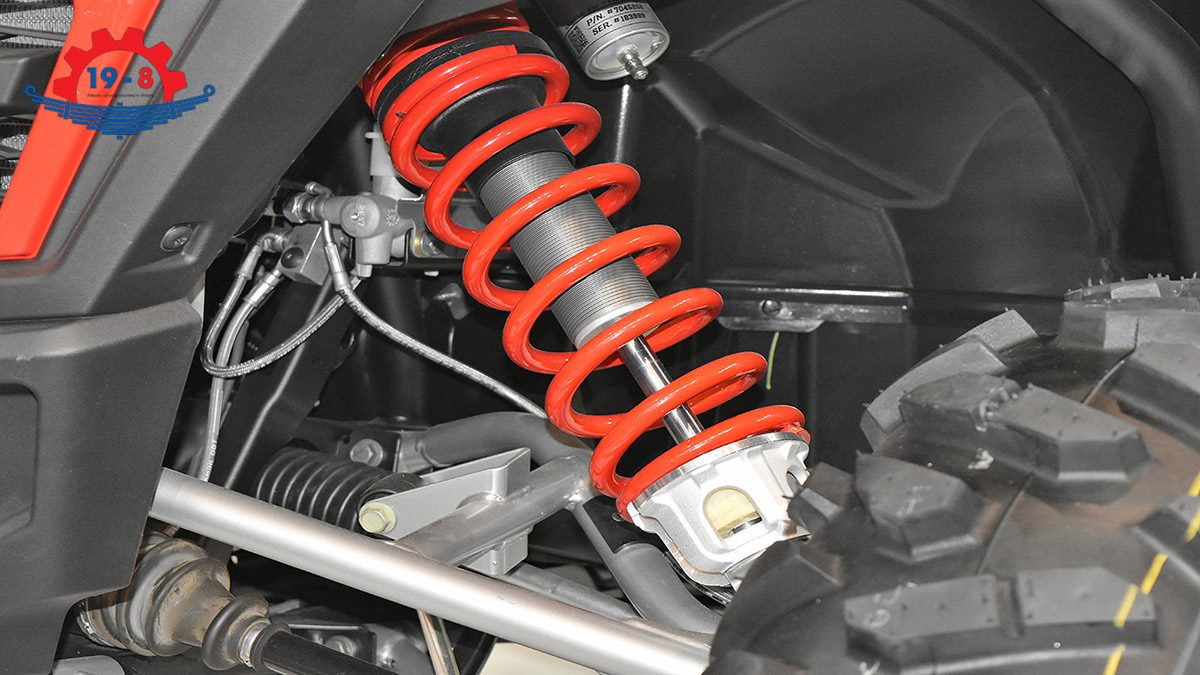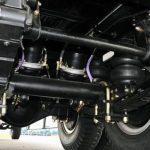Truck suspension types are more than just essential components for comfort and stability during a journey. They significantly impact cargo transportation and the overall performance of a truck. By delving into the nuances and distinctions between different suspension systems, we can optimize the efficiency of each truck type and ensure a safer journey. In this article, we’ll explore various and explain their functions and uses.


Why Truck Suspensions Are Important?
Truck suspensions are the systems that connect the frame to its wheels and allow relative motion between them. They are essential for supporting the weight of the truck, absorbing the shocks and vibrations from the road, and providing stability and handling characteristics. Different types have different advantages and disadvantages depending on the application and terrain. Let’s understand leaf spring, coil spring and air.
Leaf Spring Suspension
Definition and Structure
It is one of the oldest and most widely used forms of suspension. It consists of layers of metal springs, usually made of steel, that are stacked together and attached to the axle and the frame. The springs bend and flex when it encounters bumps or uneven surfaces, absorbing the shocks and distributing the weight evenly. It can be referred to as a semi-elliptical spring.
Advantages
It has several advantages over other, especially for heavy-duty applications. It is durable, reliable, and capable of carrying heavy loads without sagging or bottoming out. It is also relatively simple and cheap to manufacture and maintain. It is suitable for them that are used for towing and hauling, as it can withstand high torque and stress.
Disadvantages
It also has some drawbacks that may affect the ride quality and performance of the truck. It can be stiff and rigid, resulting in a harsher ride and less comfort for the driver and passengers.
It also has limited adjustability, as it cannot change its height or stiffness according to the load level or road conditions. It may require regular maintenance due to potential wear and tear, such as corrosion, cracking, or breaking of the springs.


Coil Spring Suspension
Definition and Configuration
It is another common type. It uses cylindrical springs, usually made of steel or alloy, that are coiled around a rod or tube. The springs compress and expand when it encounters bumps or uneven surfaces, providing a smoother ride compared to leaf springs. It can be configured in different ways, such as parallel, trailing arm, or independent.
Advantages
It has some benefits over leaf spring suspension in terms of ride comfort and handling characteristics. It offers a smoother ride by reducing the shocks and vibrations from the road.
It also improves the handling by allowing more precise steering and cornering. It has the potential for greater adjustability and customization, as it can be modified with different of springs, shocks, or sway bars.
Disadvantages
It also has some disadvantages compared to leaf spring suspension in terms of load-carrying capacity and durability. It has a lower load-carrying capacity than leaf springs, as it can sag or bottom out when carrying heavy loads.
It also has a shorter lifespan than leaf springs, as it can lose its shape or strength over time. It may require more frequent replacement or adjustment than leaf spring.


Air Suspension
Definition and Mechanism
It is a type that uses air-filled bags or bellows to support the vehicle instead of metal springs. The bags are attached to the axle and the frame and connected to an air compressor and a control unit. The air pressure in the bags can be adjusted by inflating or deflating them according to the load level and road conditions. Air suspension allows for adjustable ride height and load level.
Advantages
It offers adjustable ride height, enhanced comfort, and superior handling compared to other. It allows for adjustable ride height by raising or lowering the vehicle according to the load level or road conditions. This can improve ground clearance, aerodynamics, fuel efficiency, and appearance. It also improves comfort by providing a softer ride that adapts to different terrains. It also enhances handling by reducing body roll and sway.
Disadvantages
It also has some drawbacks compared to other in terms of complexity, cost, and maintenance. It is more complex than other, as it involves more components and electronics. It is also more expensive than other, both in terms of initial investment and long-term benefits. It also requires more maintenance than other, as it may be prone to air leaks and system malfunctions.


Considerations Truck Suspension Types for Choosing a Truck Suspension System
Load Capacity
One of the main factors to consider is the load capacity. They have different load-carrying capacities, which affect the performance and safety. It has the highest load-carrying capacity, followed by coil spring and air suspension.
Hence, for heavy loads with stability and handling, consider a truck with leaf spring suspension. For moderate loads with added comfort and adjustability, coil springs or air suspension might be your choice.
Ride Quality
Another factor to consider is the ride quality. They have different effects on the ride comfort and stability. Air suspension offers the smoothest ride quality, with coil spring and leaf spring following. If comfort is your priority, air is ideal. For more stability, consider leaf spring or coil spring suspensions.
Maintenance and Durability
A third factor is the maintenance and durability. They have different lifespans and maintenance requirements, which affect the cost and convenience of owning and operating.
It lasts the longest and requires the least maintenance, with coil spring and air coming next. Therefore, if you want a truck that can last longer and require less maintenance, you may opt for leaf spring. If you want something that can offer more features and flexibility, you may opt for coil spring suspension or air suspension.
Application and Terrain
A fourth factor is the application and terrain. They are suited for different purposes and environments, which affect the performance and efficiency.
It is suited for heavy-duty applications and rough terrains, such as towing, hauling, off-roading, or construction. Coil spring is suited for light-duty applications and smooth terrains, such as commuting, cruising, or city driving. Air is suited for mixed applications and variable terrains, such as recreational, commercial, or personal use.


In conclusion, understanding the various is paramount for both optimizing truck performance and ensuring road safety. By distinguishing between these systems and acknowledging their specific functions, we can make more informed decisions, whether it’s for purchasing, maintenance, or simply gaining a deeper appreciation for the engineering behind our road giants. As we’ve seen, each of them offers unique benefits tailored to particular needs, making every journey smoother and more efficient.





